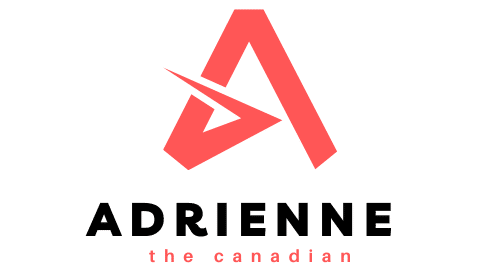What’s the Best Way to Train Spatial Orientation for Competitive Divers?

In the captivating world of underwater exploration, one skill stands out as crucial for any diver: spatial orientation. This refers to the ability to maintain an understanding of your position and direction in a three-dimensional space. This is particularly crucial for divers, considering the surreal underwater environment where up and down can easily become relative. How then, should competitive divers undertake training to hone this important skill? This article will explore the intricacies of spatial orientation training for divers, touching on the role of water and the body, the importance of buoyancy, the use of software, and the relevance of studies.
The Role of Water and the Body in Spatial Orientation
The underwater environment is an alien world for us humans, where our usual landmarks and directional cues are replaced by vast swathes of blue and green. Here, divers must rely on their bodies and the subtle changes in water pressure and temperature to navigate.
Cela peut vous intéresser : How to Develop High-Performance Sports Analytics Algorithms?
Water, being denser than air, provides resistance that can affect the body’s motion. This changes the way divers perceive their body’s position in relation to the surrounding environment. Training in a pool, therefore, is essential for divers to acclimatize to this unique medium. During these training sessions, divers are often encouraged to close their eyes and focus on their body’s movement through the water. This kind of training helps divers to develop a keen sense of proprioception, or the awareness of one’s body in space.
The brain plays a critical role in spatial orientation. It continually processes information from the eyes, ears, and skin to construct a mental map of the body’s position. Over time, consistent practice allows the brain to refine this map, thus improving spatial orientation. For divers, this requires repeated exposure to underwater environments, which can help to train the brain to recognize and adapt to the subtle cues that indicate direction and depth underwater.
A voir aussi : How Can Cognitive Training Enhance Decision-Making Speed in Ice Hockey Goalkeepers?
The Importance of Buoyancy Control in Spatial Orientation
Buoyancy is a critical aspect of diving that impacts a diver’s ability to maintain spatial orientation underwater. By adjusting their buoyancy, divers can control their ascent and descent and maintain a static position underwater.
It is essential that divers master the ability to control their buoyancy as it allows them to move in a three-dimensional space effortlessly. In training sessions, divers must learn to control their breathing, as even a small change in lung volume can affect buoyancy underwater. This skill also enables divers to maintain a constant depth, which is vital in conserving air and avoiding decompression sickness.
Training for buoyancy control involves a series of exercises aimed at achieving neutral buoyancy, where a diver neither sinks nor floats. Mastering this skill requires practice, patience, and a deep understanding of the physics involved.
The Role of Software in Spatial Orientation Training
With the advent of technology, training for spatial orientation has taken a leap forward. Several software tools now exist to aid divers in improving their spatial orientation skills. These tools typically use virtual reality (VR) or augmented reality (AR) to simulate underwater environments, thereby providing a risk-free platform for divers to practice their spatial orientation skills.
For instance, the Diver Orientation Indicator (DOI) is a software that gives real-time feedback on a diver’s spatial orientation, depth, and direction. It visually displays this data on a transparent screen, allowing divers to correct their position instantaneously.
Such software provides an immersive, interactive environment that enables divers to experience the challenges of underwater navigation without the associated risks. It also allows for controlled training, where parameters such as water visibility, current, and depth can be adjusted to present different challenges.
The Relevance of Studies in Spatial Orientation Training
There have been a number of studies conducted that contribute to our understanding of spatial orientation training for divers. These studies provide valuable insights into how divers can train more effectively and improve their spatial orientation skills.
One such study, for example, examined the effect of low visibility on a diver’s spatial orientation. The study found that divers who trained in low visibility conditions showed significant improvements in their spatial orientation skills compared to those who trained in clear water. This suggests that training under challenging conditions can bolster a diver’s ability to navigate underwater.
Another study established correlations between a diver’s skill level and their ability to maintain spatial orientation. The study concluded that experienced divers were better at keeping track of their position underwater, suggesting that spatial orientation is a skill that improves with time and practice.
It is important to note that while these studies provide valuable insights, every diver is unique and may respond differently to different training methods. It is therefore crucial for divers to experiment with various techniques and approaches to find what works best for them.
In the complex and mesmerizing world of underwater exploration, maintaining spatial orientation is an essential skill for divers. By understanding the role of water and the body, mastering buoyancy control, leveraging software tools, and learning from scientific studies, divers can effectively train and improve their spatial orientation skills.
Harnessing Virtual Reality for Enhancing Spatial Orientation
In recent years, virtual reality (VR) has emerged as a game-changer in the training of spatial orientation for scuba divers. It offers an immersive, controlled, and cost-effective platform for divers to train, experiment, and learn in a risk-free setting.
VR technology can simulate a wide range of underwater environments and conditions, such as current strength, water visibility, and depth. These simulations allow divers to practice navigating in different scenarios that they might encounter in actual dives.
Additionally, VR can help divers improve their spatial memory. In a simulation, divers can use visual cues to navigate and remember their path. This can enhance their ability to recall routes and landmarks in real-world dives, thereby improving their spatial orientation.
VR training sessions also provide instant feedback, allowing divers to assess and correct their body orientation, position, and direction in real-time. This can expedite the learning process and enhance their spatial orientation skills more effectively compared to traditional training methods.
To maximize the benefits of VR, divers can combine it with traditional pool training. This combined approach can provide the best of both worlds: the authentic weightlessness and physical sensation of being in water, and the risk-free, customizable environment of VR.
Future Directions in Spatial Orientation Training
The future of spatial orientation training for divers is promising, with constant advances in technology and neuroscience offering new possibilities. However, it’s crucial for divers to stay abreast of these developments and continually refine their training methods.
Previous studies have shown the potential of various tools in enhancing a diver’s spatial orientation skills. Continued research in this area can yield even more effective training methods. For instance, future studies could explore the use of brain responses to different stimuli, which could help divers better understand how they process spatial information and adapt their training accordingly.
Training equipment is also evolving. As the technology behind dive equipment advances, divers can look forward to more sophisticated tools that can aid in their spatial orientation. For instance, dive computers with built-in sensors to detect changes in water pressure, temperature, and depth can provide real-time feedback on a diver’s spatial orientation.
Furthermore, holistic training approaches that incorporate mental and physical exercises could become more prevalent. Mental exercises like meditation could enhance concentration and spatial memory, while physical exercises like yoga could improve body awareness and control, both of which are crucial for spatial orientation.
Conclusion
In the realm of competitive diving, spatial orientation is a critical yet challenging skill to master. It requires an understanding of one’s body, the role of water and buoyancy, and the ability to interpret subtle cues from the environment.
Fortunately, divers today have a wide range of resources and tools at their disposal to enhance their spatial orientation skills. From VR technology to scientific studies, divers can leverage these resources to train more effectively, safely, and efficiently.
Still, every diver is unique, and what works for one may not work for another. Therefore, divers should experiment with different training methods, continually assess their spatial orientation skills, and adapt their training as necessary.
With dedication, practice, and the right training approach, divers can improve their spatial orientation, navigate the mesmerizing underwater world with confidence, and ultimately, enhance their underwater experience.
